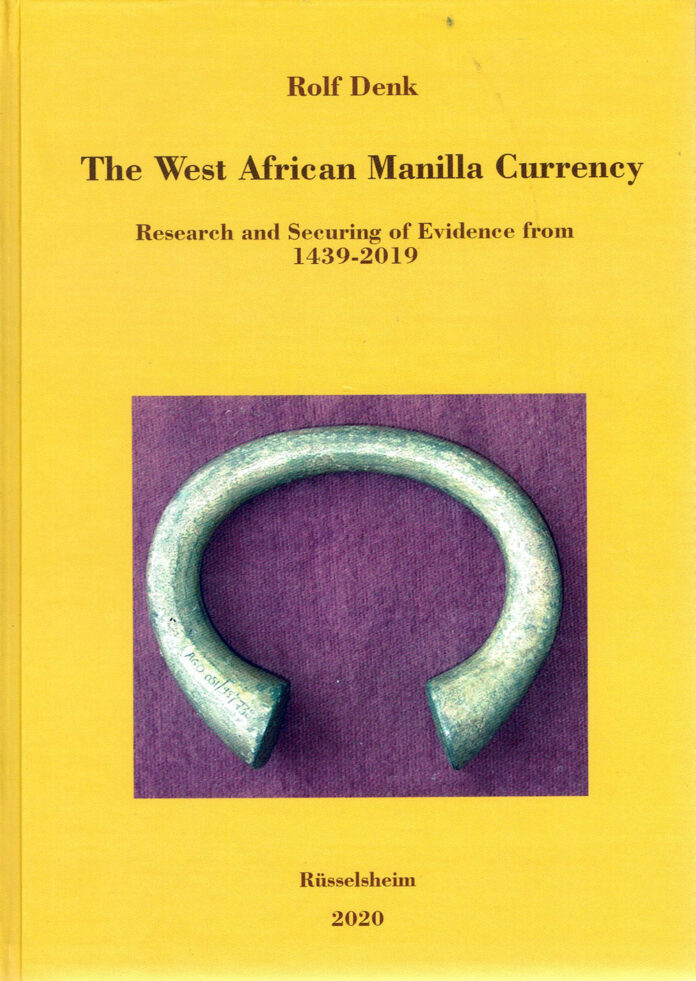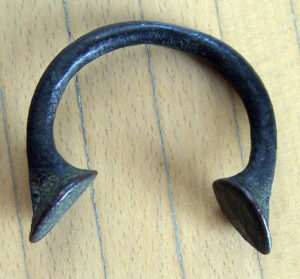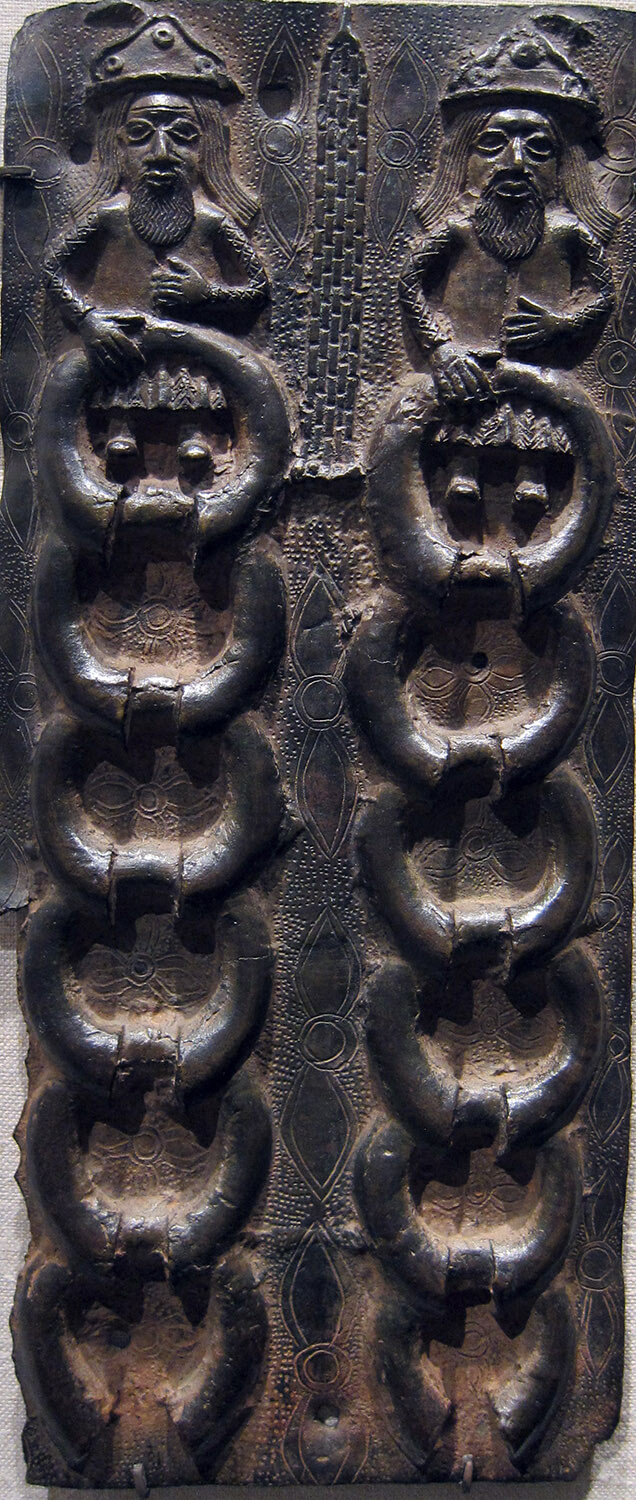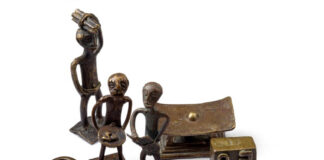
Premonetary currencies are in! They make monetary history exciting for people who otherwise wouldn’t have the patience to look at endless rows of coins. Rai stones, toluk and other such currencies are also fascinating for sociologists and economic theorists, who, through their usage, attempt to reconstruct social models that deviate from the basic capitalist structure.
The problem is that some of these authors prefer to use translations rather than actually referring to the sources. This doubles the risk of a misunderstanding. The explorers back in the early modern period tended to make mistakes when they made notes about the customs of other cultures in their own words. And then when translators were added into the mix …
In any case, Rolf Denk, founding member of EUCOPRIMO, the European Union to Search For, Collect and Preserve Primitive and Curious Money, found himself faced with these linguistic problems time and again. After all, he has been researching premonetary forms of currency for many decades and has now published 110 papers on this field of research. He is particularly passionate about manillas, which were already the subject of his monograph entitled ‘Das Manillen-Geld West Afrikas’ (The West African Manilla Currency), published in 2017. We have the extended second edition of this work, which is translated into English, with us here.
This work brings together all sources about manillas, as well as the original sources in the original transcription. With the help of his international network, Rolf Denk has also translated all text passages into English, making the book ‘The West African Manilla Currency’ an excellent and irreplaceable source of material for any further research.

What is a Manilla?
For more than half a millennium, manillas were the most important currency for European traders when they wanted to trade with West African tribes. But what exactly is a manilla? Rolf Denk ventures the following definition: ‘A manilla is a metal object that was used in trade or payment transactions with West Africa. They are primarily understood to be an open ring made from copper or an alloy of copper, lead, zinc or tin, as used explicitly in the Kingdoms of Kongo and Benin. This object was produced in Europe especially for Portuguese trade with West Africa. It was not intended as jewellery, and its opening is far too large for it to be worn on the arm.’ The author notes that manillas are not ankle or neck rings and should not be confused with the arm rings produced in the region. Although it has become common in literature to refer to certain types of local jewellery as manillas, these pieces were not used for trade and therefore should not be interpreted as a form of currency.
Manillas in Sources
Rolf Denk takes the reader meticulously from source to source. He starts with documents illustrating the fact that manillas were already in use when the Portuguese landed in the Kingdom of Kongo back in 1483. From there, he takes the reader from the early Portuguese sources to the notes of other trading nations, all the way to the English documents. The author also writes about manilla finds – from excavations and underwater expeditions.
Rolf Denk is careful to make clear distinctions between the different types of manillas and to compile the text passages on production and use. The book ends with sources on the demonetisation of manillas and a short overview of how the image of the manilla is used as a state symbol in today’s circulation money and postal system.
The impressive collection of material ends with a range of maps and impressive illustrations on the subject.
Why is it So Important to Understand the Trade With Manillas?
Rolf Denk’s book is highly topical from a political standpoint, as it deals with a subject that could make an excellent historical commentary on current discussions. It was only on 30 April 2021 that German television news service Tagesschau reported that Monika Grütters, with the help of some obedient academics, had managed to ensure that Germany would be the first country to return Benin Bronzes that have been in German museums for more than a century.
Now, the Benin Bronzes in question were made from the exact same bronze that came to West Africa as manillas. They were actually a fundamental part of the slave trade: European traders used them to pay local business partners, who sold both their own and foreign subjects as slaves in exchange for the precious bronze. The slave trade was exclusively in the hands of the ruler, the Oba, who also monopolised the bronze for himself so that he could decorate his palace with elaborately produced figures made from the metal.
The Oba, who was driven into exile by the British in 1897, was therefore not at all the innocent victim he is sometimes portrayed as. Now, the British were by no means innocent either. We must not forget that in the 19th century, strong-arm tactics were still considered to be completely justified and had no stigma attached to it.
In any case, Germany bought the Bronzes from public auctions. And these Bronzes changed Europe’s view of Africa. Many artists were inspired by the beautiful objects. To speak of ‘looted artefacts’ in this context – as the Tagesschau does – is therefore unhistorical.
But that’s another matter. In any case, the manillas are a tiny piece of this puzzle, which reveals that good and evil, the powerful slave trader and the powerless slave, were not connected to skin colour, but rather to social status.
The Intentions of the Book
But this question goes far beyond the horizons of the book. Rolf Denk wasn’t trying to write the history of the West African slave trade. He had set himself the task of compiling all the relevant sources. Thanks to him, they are now available for scholars to work with in broader historical contexts.
His book will become a fundamental work for anyone looking to research this subject in depth.
You can buy this book for 35 euros from tredition GmbH.





